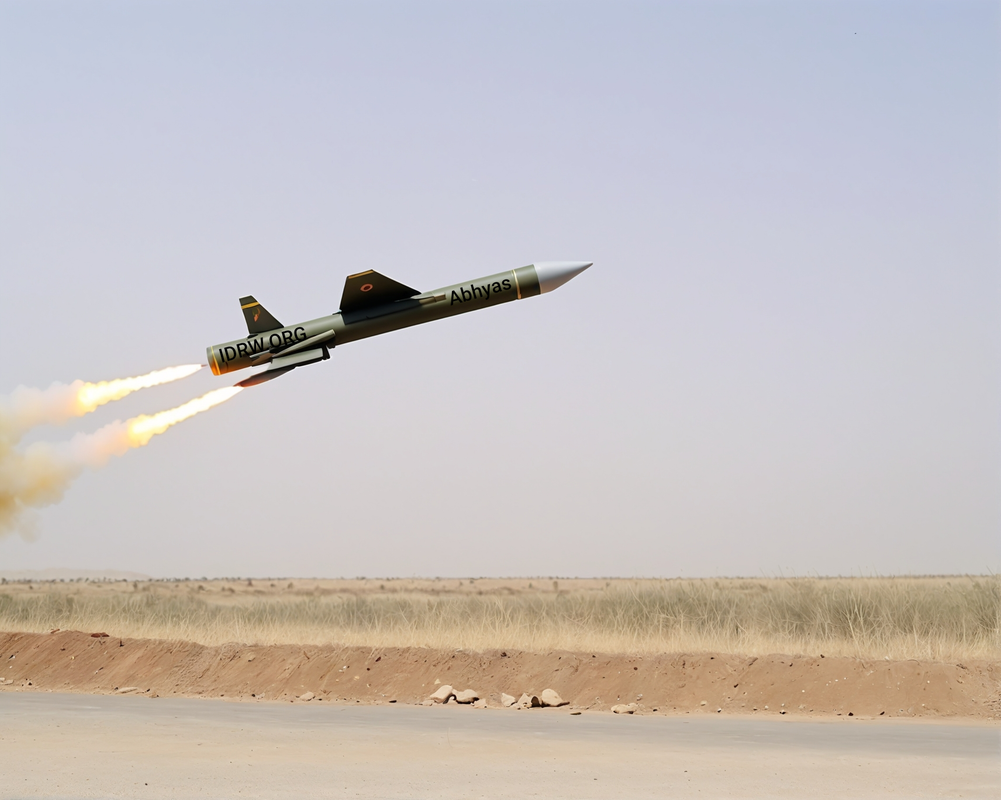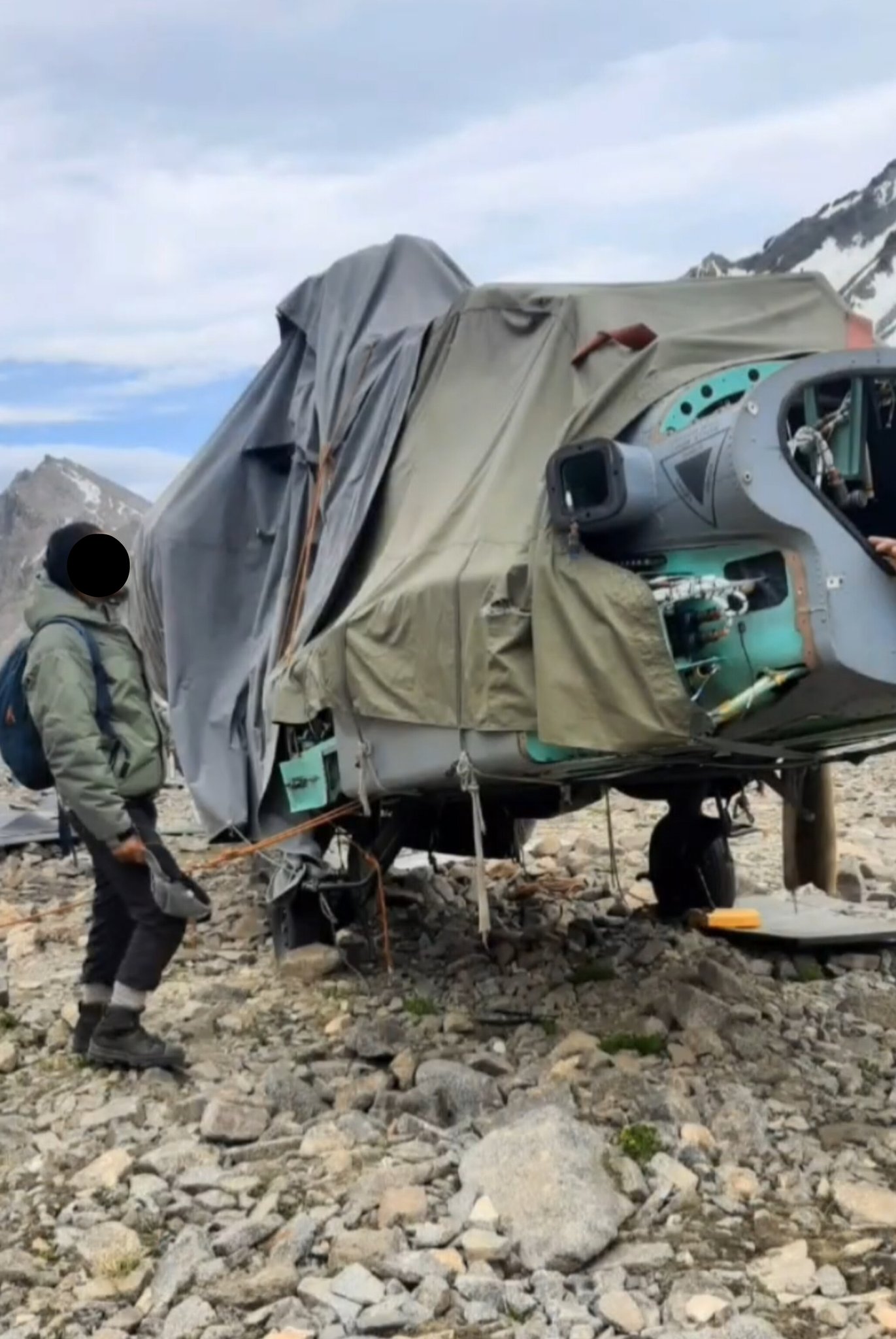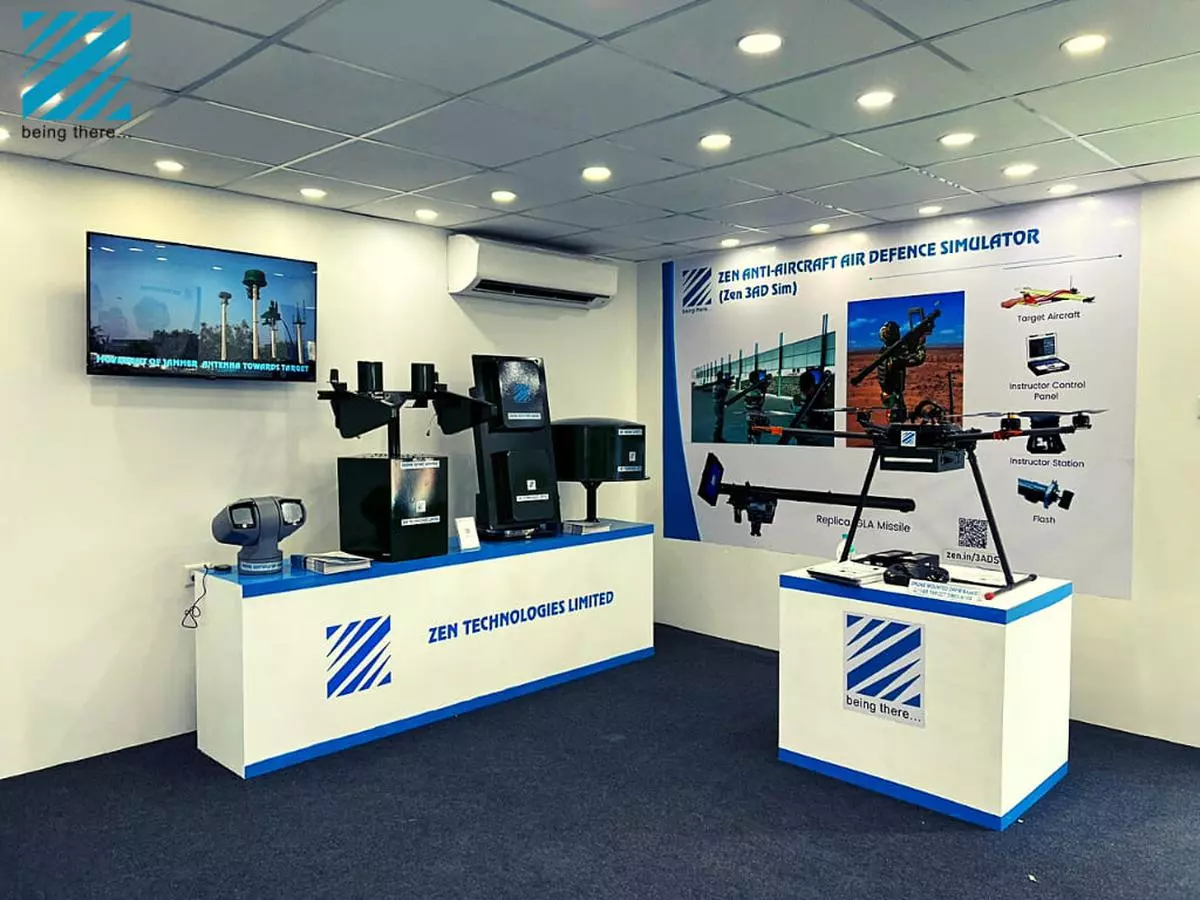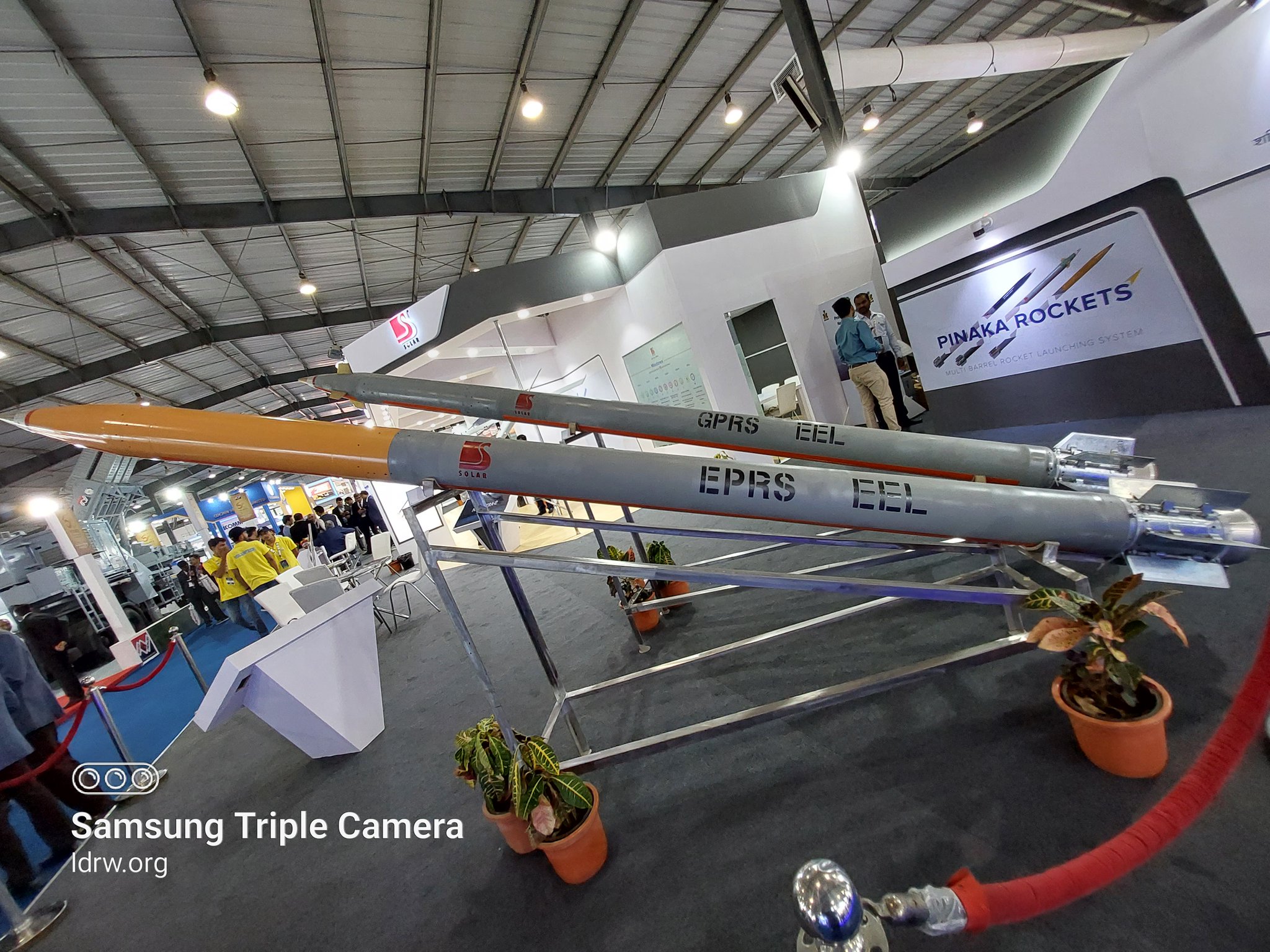SOURCE: AFI

A day after Prime Minister Narendra Modi received a warm welcome from the Indian diaspora in the United States, Gurpatwant Singh Pannun, the chief of the banned Sikh For Justice (SFJ) and a designated Khalistani terrorist, released a 90-second video issuing threats against Indian-American citizens.
Pannun accused Indian-American Hindus who participated in Modi’s reception of “treason” and demanded that they leave the United States. He labeled them as “followers of Modi’s violent Hindutva ideology” and reiterated the SFJ’s goal of “Balkanizing India through a Khalistan referendum.”
Continue readingSOURCE: RAUNAK KUNDE / NEWS BEAT / IDRW.ORG

India’s Advanced Medium Combat Aircraft (AMCA) is poised to become the world’s first 5.5th generation fighter jet, showcasing features that surpass those of current 5th generation aircraft. Developed by the Aeronautical Development Agency (ADA) and the Defence Research and Development Organisation (DRDO), the AMCA is classified as a 5.5th-generation aircraft due to its late entry into the program, allowing for the incorporation of advanced technologies.
One of the standout features of the AMCA MKII is its Remote Pilot capability. This innovative feature enables the aircraft to be controlled by a remote operator in the event of pilot injury or incapacitation, ensuring mission continuity and enhancing survivability. Additionally, the AMCA MKII will feature Electronic Pilot, an AI program that can take over basic piloting tasks, allowing the human pilot to focus on mission-critical areas.
Continue readingSOURCE: RAUNAK KUNDE / NEWS BEAT / IDRW.ORG

The Defence Research and Development Organisation (DRDO) is steadily progressing towards the completion of the Critical Design Review (CDR) for its Next Generation Main Battle Tank (NGMBT) design, intended for the Indian Army’s Future Ready Combat Vehicle (FRCV) program.
The NGMBT project has been making significant strides since its inception. After undergoing a preliminary design review (PDR) approximately three years ago, the DRDO has been diligently refining the design to meet the specific requirements outlined in the Army’s Request for Information (RFI) tender.
Continue readingSOURCE: RAUNAK KUNDE / NEWS BEAT / IDRW.ORG

The Aeronautical Development Establishment (ADE), a premier lab of India’s Defence Research and Development Organisation (DRDO), has been expanding the capabilities of its Abhyas High-speed Expendable Aerial Target (HEAT). Originally designed as an aerial target to simulate enemy aircraft for missile testing, Abhyas is now being developed into more versatile systems, including kamikaze drones and loitering munitions, with potential roles in Manned-Unmanned Teaming (MUM-T) operations.
Initially developed as a cost-effective solution for training and missile target practice, Abhyas has a range of 100 km, can fly at speeds up to 0.5 Mach, and offers 45 minutes of endurance. However, ADE is now working on new variants that can transform Abhyas from a purely expendable target into a tactical platform capable of performing a variety of critical missions.
Continue readingSOURCE: AFI

The Bay of Bengal, a vast expanse of water nestled between India, Bangladesh, Myanmar, and Sri Lanka, has long been recognized as a strategic asset for India’s maritime security. Its unique geographical features, coupled with its depth profile, make it an ideal sanctuary for India’s submarine fleet, especially its ballistic missile submarines (SSBNs) and attack submarines (SSNs).
One of the most significant advantages of the Bay of Bengal is its depth. Unlike other regions where the continental shelf extends far out into the ocean, the Bay of Bengal features a steep drop-off, allowing submarines to operate in deep waters without fear of detection. This depth profile provides a natural barrier against enemy surveillance and detection systems.
Continue readingSOURCE: AFI

Satellite imagery captured by independent cybersecurity researcher Shiv Cybersurg has revealed that Chinese J-11 fighter jets stationed at the Hotan Airbase in occupied East Turkestan (Xinjiang) have remained virtually motionless for at least three years. The images, shared on social media, have sparked discussions and speculation among Indian users.
The revelation that the J-11 jets have not been moved from their positions since 2021 and 2022 has raised questions about the Chinese military’s intentions. Some users have suggested that the jets might be dummy models, strategically placed to demonstrate the Chinese capability of operating advanced fighter jets from high-altitude airbases.
Continue readingSOURCE: AFI

The Defence Electronics Research Laboratory (DLRL) is spearheading a cutting-edge initiative to enhance electronic warfare (EW) capabilities by developing an advanced AI-based EW Data Analysis System (AI-EWDA). This system leverages machine learning and deep learning technologies to predict the identity of unknown emitters and provide countermeasure suggestions, marking a significant leap in India’s defense technology landscape.
The AI-EWDA system is designed to process and analyze data from multiple sensors to deliver comprehensive and precise information about potential electronic threats. Electronic warfare relies on detecting and analyzing various types of electromagnetic signals, such as radar emissions and communication signals, to identify enemy emitters and devise counter-strategies. However, this process has traditionally required significant manual intervention and expert analysis. DLRL’s new AI-EWDA system aims to automate and accelerate this process, transforming how EW operations are conducted.
Continue readingSOURCE: AFI

Admiral Arun Prakash, a retired Four-Star Admiral and former Chief of the Naval Staff of the Indian Navy, has expressed his concerns regarding the practice of wearing shoulder rank badges, gorget collar tabs, and medal ribbons on camouflage fatigues. According to Admiral Prakash, this practice is “oxymoronic and tactically unsound” and should be reconsidered, especially in combat situations where camouflage is critical.
Admiral Prakash pointed out that elsewhere in the world, the use of traditional rank insignia on combat uniforms has been replaced by more discreet, monochrome badges. These are typically worn on the chest, making them less conspicuous in operational environments. His comments highlight the need for India’s armed forces to re-evaluate the current practice of displaying visible insignia on camouflage fatigues.
Continue readingSOURCE: IDRW.ORG

Indo-Russian Rifles Private Limited (IRRPL), the joint venture between India and Russia responsible for producing the Kalashnikov AK-203 assault rifles, is witnessing a surge in inquiries from African and Middle Eastern countries. The Western sanctions imposed on Russian arms manufacturers have created a lucrative opportunity for IRRPL to export its Made in India AK-203 assault rifles to these regions.
Recently, IRRPL successfully delivered 35,000 AK-203 rifles to the Indian Army, marking a significant milestone in the project. The production of these rifles in India is fully aligned with the government’s Make in India and Atmanirbhar Bharat Abhiyaan (Self-Reliant India) initiatives. The project involves technology transfer and aims for 100% localization of AK-203 production.
Continue readingSOURCE: IDRW.ORG

Tonbo Imaging, a leading manufacturer of advanced thermal imaging systems, is set to equip the Indian Army with its innovative Sarisa CLIPON Thermal Sight. The Sarisa, a cooled LWIR thermal imager designed specifically for the Konkurs launcher, will be inducted into the Indian Army next week.
The Sarisa CLIPON Thermal Sight offers a significant upgrade to the Konkurs launcher’s capabilities. Integrated with a high-performance cooled thermal imaging camera, it enables soldiers to lock onto stationary or moving targets before launching a missile. Operating in the LWIR spectral range, the Sarisa can detect, recognize, and identify threats at long ranges, even in challenging day-night and adverse weather conditions.
Continue readingSOURCE: AFI

A team of specialist mountaineers and engineers has successfully retrieved the Indian Air Force’s AH-64E Apache helicopter from the Khardung La region. The helicopter had made a precautionary landing during an operational sortie in April of this year.
The Boeing Apache helicopter made an emergency landing on April 4 at a location north of the Khardung La, a 18,380-foot-high pass. Both pilots were airlifted safely from the scene on the same day. However, the retrieval of the helicopter itself posed significant challenges due to the remote and high-altitude terrain.
Continue readingSOURCE: AFI

Zen Technologies, a leading player in the Indian defense industry, has adopted an IP-driven business model to differentiate itself from competitors. This approach, fueled by a childlike curiosity and a relentless pursuit of innovation, has enabled the company to develop cutting-edge technologies and secure a strong market position.
Ashok Atluri, the founder and managing director of Zen Technologies, believes that a childlike curiosity is essential for driving innovation in the defense industry. By approaching challenges with an open mind and a willingness to explore new possibilities, Zen Technologies has been able to develop unique solutions that address the evolving needs of the Indian armed forces.
Continue readingSOURCE: AFI
Nibe Limited, a leading Indian aerospace and defense company, has announced plans to launch a constellation of 23 military-grade intelligence satellites in India. The company aims to expand the constellation to 40 satellites in the long term.
These satellites will be equipped with state-of-the-art technology, including Optical, Infra-Red, and Synthetic Aperture Radar (SAR). This combination will enable the satellites to provide high-resolution imagery and data for both military and civil applications.
Continue readingSOURCE: AFI

India is set to establish its first national security semiconductor fabrication plant, which will supply chips to the US armed forces, its allied militaries, and Indian defense forces. The fab, to be called Shakti, is scheduled to be operational in 2025.
The plant will focus on manufacturing infrared, gallium nitride, and silicon carbide semiconductors, and will be enabled by the India Semiconductor Mission and a strategic technology partnership between Bharat Semi, 3rdiTech, and the U.S. Space Force.
Continue readingSOURCE: AFI

Apollo Micro Systems Ltd has been selected as the Lowest Bidder (L1) for the supply of a Guidance, Navigation, and Control (GNC) Kit to Munitions India Ltd. The project, valued at Rs 72.26 crore, aims to enhance the accuracy of the Pinaka rocket system, a free-flight artillery rocket developed by the Armament Research and Development Establishment (ARDE).
The Pinaka rocket system, while capable of delivering payloads over extended ranges, has previously faced limitations in terms of accuracy. By integrating a GNC kit, the system can now be transformed into a guided weapon, significantly improving its precision.
Continue reading